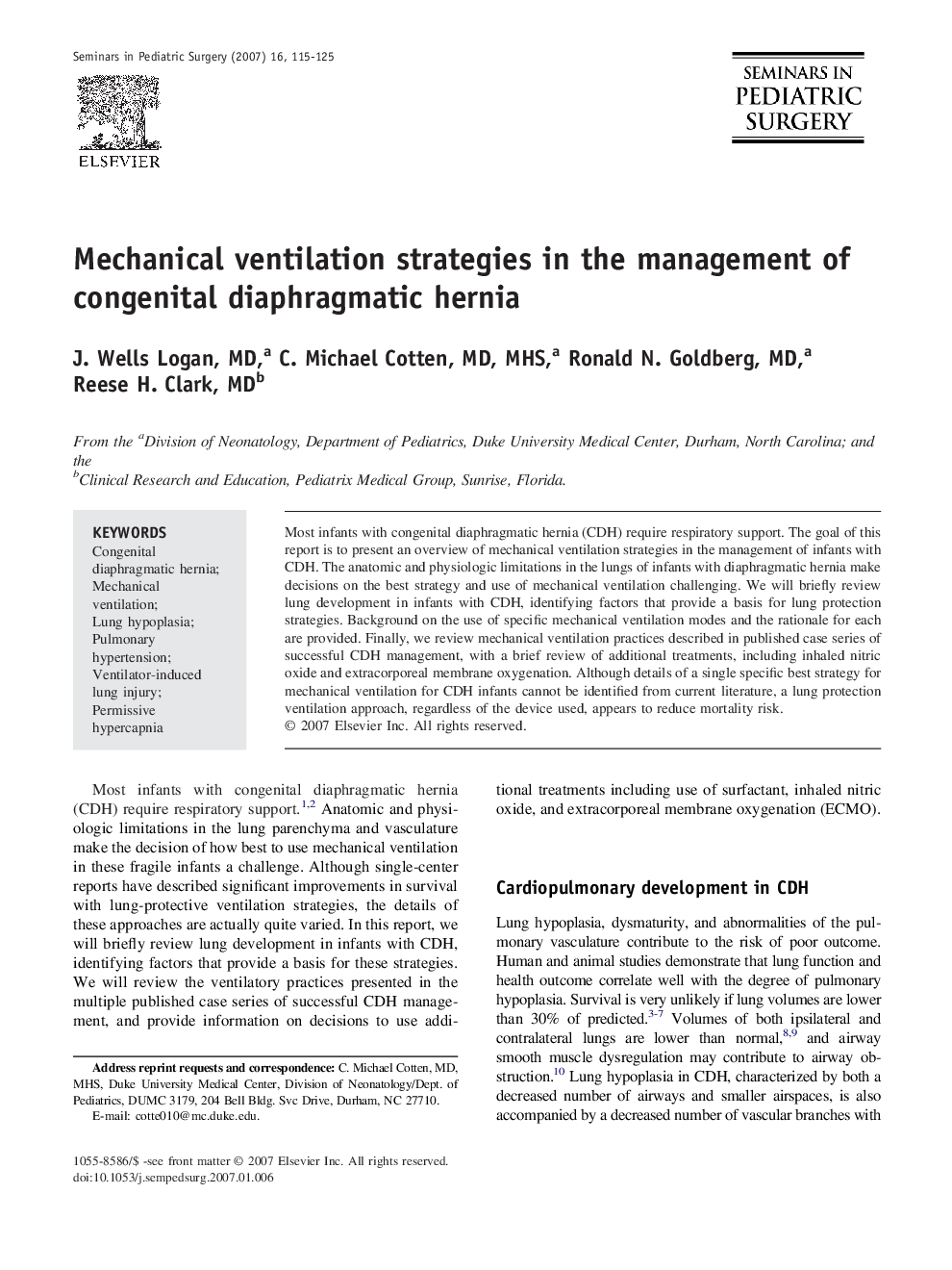| Article ID | Journal | Published Year | Pages | File Type |
|---|---|---|---|---|
| 4176795 | Seminars in Pediatric Surgery | 2007 | 11 Pages |
Most infants with congenital diaphragmatic hernia (CDH) require respiratory support. The goal of this report is to present an overview of mechanical ventilation strategies in the management of infants with CDH. The anatomic and physiologic limitations in the lungs of infants with diaphragmatic hernia make decisions on the best strategy and use of mechanical ventilation challenging. We will briefly review lung development in infants with CDH, identifying factors that provide a basis for lung protection strategies. Background on the use of specific mechanical ventilation modes and the rationale for each are provided. Finally, we review mechanical ventilation practices described in published case series of successful CDH management, with a brief review of additional treatments, including inhaled nitric oxide and extracorporeal membrane oxygenation. Although details of a single specific best strategy for mechanical ventilation for CDH infants cannot be identified from current literature, a lung protection ventilation approach, regardless of the device used, appears to reduce mortality risk.
